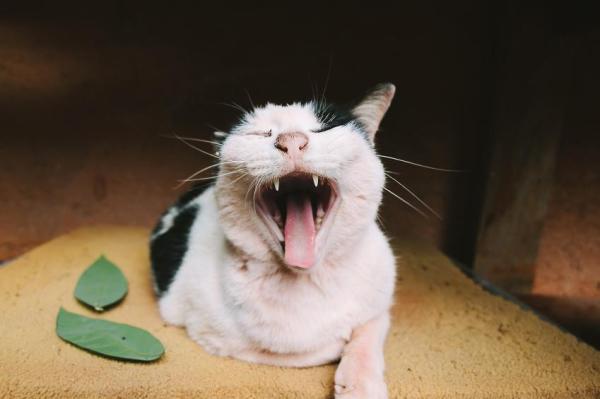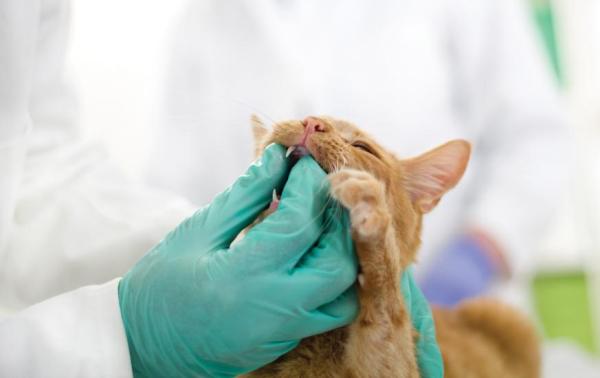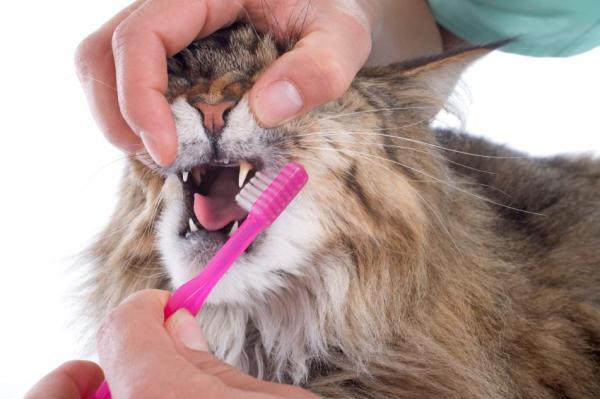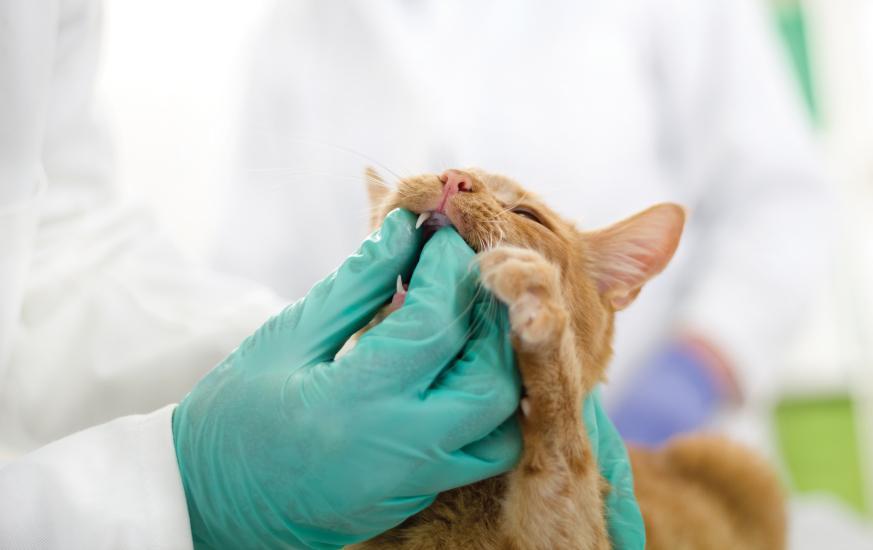What Is Gingivitis in Cats?



See files for Cats
Taking good care of your cat's teeth is important for their overall health and well-being. Gingivitis, an inflammation of the gums, is a common issue in cats that can lead to pain, discomfort, and other health problems if left untreated. But the good news is, there are plenty of things you can do to prevent gingivitis in your cat.
Learn all about feline gingivitis, how to spot it, and explore treatment and prevention strategies in this AnimalWised article.
What is gingivits or gum disease in cats?
Gingivitis in cats is a dental condition characterized by inflammation of the gums. It is quite common in cats, especially as they age. It's estimated that a significant percentage of cats over the age of three have some degree of gingivitis.
It typically occurs due to a buildup of plaque and tartar on the teeth, which leads to bacterial infection and irritation of the gums.
Symptoms of gingivitis in cats
Gingivitis typically begins with inflammation of the gums, which may present as a thin red line along the gums. The gums may also appear swollen and red. Cats with gingivitis often experience pain, which can lead to changes in behavior and eating habits.
Cats with gingivitis may exhibit a variety of symptoms, including:
- Bleeding gums
- Loss of appetite
- Weight loss
- Difficulty swallowing (especially dry food)
- Reluctance to groom
- Bad breath
- Excessive salivation
Cats with gingivitis may show behavioral changes due to mouth pain and discomfort. They might become more irritable, exhibit signs of depression like being less active or withdrawn, or bite if handled near their mouths. This is because the inflammation and pain make eating, playing, and even petting uncomfortable.

Causes of gingivitis in cats
Gingivitis in cats can have several underlying causes, but the most common ones fall into two main categories:
Poor dental hygiene
Plaque and tartar accumulate on teeth due to food debris and saliva, forming a sticky film of bacteria. Without regular removal through brushing or dental chews, plaque hardens into tartar, worsening gum irritation and inflammation.
Regular veterinary dental cleanings are crucial. While brushing aids, professional cleanings eliminate stubborn tartar buildup beyond what at-home care can manage.
Finally, diets high in carbohydrates and sugars can promote plaque growth.
Underlying health conditions
- Feline leukemia virus (FeLV) and feline immunodeficiency virus (FIV): these weaken the immune system, making cats more susceptible to oral infections like gingivitis.
- Autoimmune diseases: these can attack healthy tissues, including the gums, leading to inflammation.
- Kidney disease: can cause stomatitis, a severe form of gingivitis with mouth ulcers.
- Diabetes: can contribute to increased inflammation throughout the body, including the gums.
- Crowded teeth: in some cases, teeth that are too close together can be harder to clean effectively, leading to plaque buildup and gingivitis.
Spotted yellow teeth on your cat? Read our article to understand why this happens and what you can do to help your feline friend maintain a healthy smile.

Treatment for gingivitis in cats
In the treatment of gingivitis, dental cleaning under anesthesia is essential, as it effectively removes plaque and tartar buildup.
In cases where bacterial infection is present, targeted antibiotic therapy may be implemented to further mitigate inflammation and promote healing. Additionally, anti-inflammatory medication can be administered to alleviate pain and reduce inflammation associated with gingivitis.
Depending on the individual case, dietary changes might be recommended, including the adoption of a specialized diet tailored for dental health.
Can brushing cats teeth reverse gingivitis?
Brushing a cat's teeth can help prevent gingivitis and slow its progression, but it may not reverse existing gingivitis on its own. However, regular brushing can significantly reduce plaque buildup, which is a primary contributor to gingivitis. By removing plaque, brushing helps prevent further inflammation and may aid in reducing the severity of existing gingivitis over time.

How to prevent gingivitis in cats
Regular teeth brushing is the most effective way of preventing gingivitis in cats. This crucial practice not only shields against gum inflammation but also contributes to overall oral health and allows you to closely monitor your cat's mouth for any early signs of trouble.
Ideally, aim for brushing at least three times a week, starting the habit early in your cat's life for easier acceptance. Remember to use cat-specific toothpaste, as human toothpaste contains fluoride, which can be toxic to felines.
What is the alternative to brushing cats teeth?
Thankfully, several alternatives can still help prevent gingivitis and promote oral health:
- Dental chews and treats: These specially formulated products use their texture to mechanically clean teeth as your cat chews, helping to reduce plaque and tartar buildup.
- Dental wipes and pads: Although not as effective as brushing, these wipes and pads can be used to gently clean your cat's teeth and gums, removing plaque and bacteria.
- Dental water additives: As a last resort, consider adding these additives to your cat's drinking water. They can help reduce plaque and tartar, although their effectiveness might vary.
Finally, schedule regular veterinary check-ups to monitor your cat's oral health and address any issues early. Your veterinarian can recommend appropriate preventive measures and treatments based on your cat's individual needs.

This article is purely informative. AnimalWised does not have the authority to prescribe any veterinary treatment or create a diagnosis. We invite you to take your pet to the veterinarian if they are suffering from any condition or pain.
If you want to read similar articles to What Is Gingivitis in Cats?, we recommend you visit our Other health problems category.









